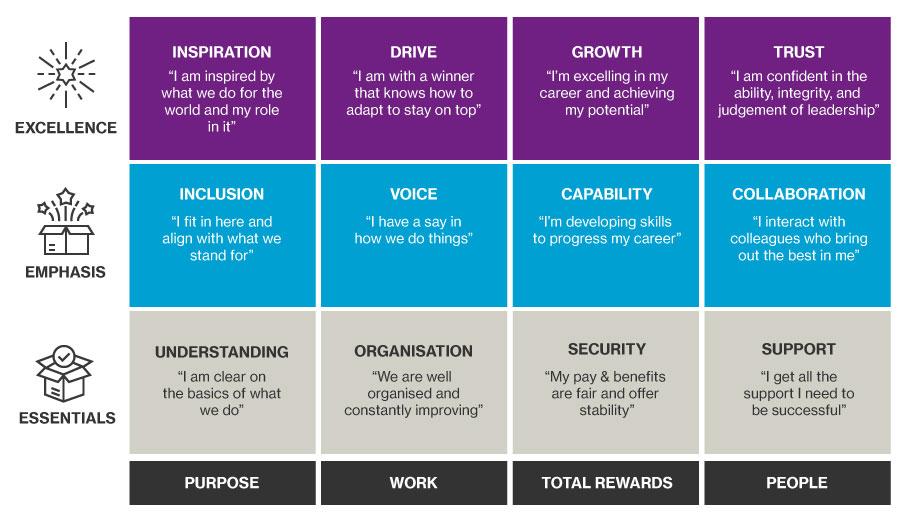Part of the Transform to Perform series
Communication should support the moments that matter with your employees. When you get this crucial aspect of employee experience right, you build trust with your people, inspire thoughtful decisions and drive meaningful change.
Willis Towers Watson research shows a strong link between organisations with superior financial performance and high performance employee experience (HPEX). Through a communication lens, this ensures your employees have a voice, have tools and resources available to support them, and make them feel that you care.

These employee communications explain how things like your benefits work, what actions are required by your employees and when, where they can find information, and how to get answers or support.
Sample communications that support the Essentials include using channels like information guides, postcards, newsletters or intranet content. While these might be more traditional forms of employee communication, we know they continue to be important.
To successfully deliver the Essentials, we need to ensure that we are building understanding, broadcasting a common message that is likely to be in a “one way” format. These messages are focused on the basics – explaining benefits or change and navigating employees to available resources and support.
The more successful organisations also have a communication strategy that addresses stakeholders, messages and timing. This ensures that year-on-year, they have a roadmap for their communication programs.
This shifts how we communicate to include a greater focus on building connections and obtaining relevance from data. This is often achieved through multiple channels where our goal is to create two-way conversations with employees.
Sample channels of Emphasis communication include journey maps, microsites, targeted emails, storytelling and example scenarios reflecting employee data or current/past behaviours.
Communications for Emphasis build on the Essential level and are designed to facilitate action and drive greater levels of employee insight.
If we think about Inclusion (in Figure 01) we can consider how we design our communication programs to better support differing employee needs, so that whatever we need to communicate is more easily understood, appreciated and valued by a wider section of the workforce.
This drives a more interactive and engaging employee experience that seeks to listen, react and respond to ongoing employee feedback. It uses digital to create a personalised experience and is integrated with the broader employee experience.
Sample channels of Excellence communication include online platforms, mobile apps, social media, personalised guidance and statements.
Communications here are designed to align to your value proposition. They are intended to deliver a personalised digital experience that inspires change and promotes action; leveraging ambassadors as needed.
If we take Growth (in Figure 01) as an example, we are seeking to engage employees using tools such as online platforms that are aligned with employees’ career stage and aspirations, that assist employees in making decisions and inspire active thinking and behaviour change.
Using effective communication to create a HPEX isn’t necessarily hierarchical. Our framework is modular and you can deliver certain pieces of the Essentials well while also creating Emphasis or Excellence in certain areas.